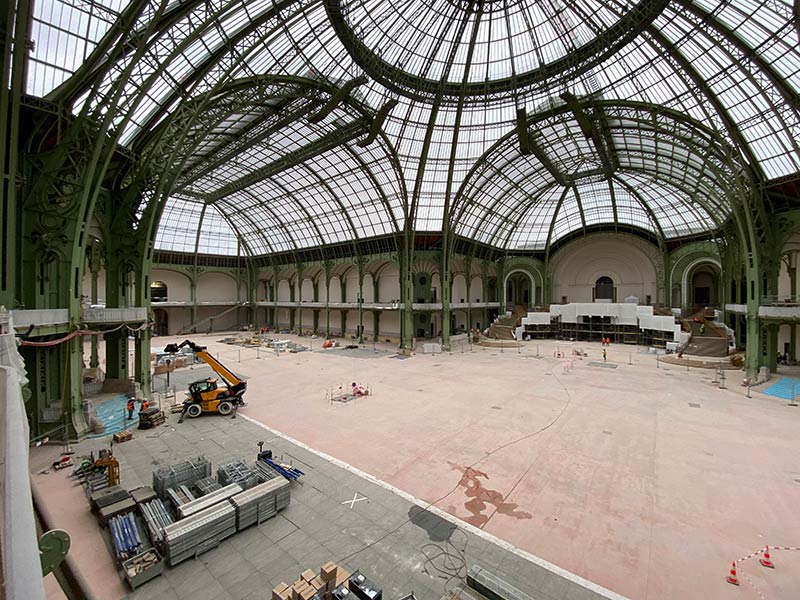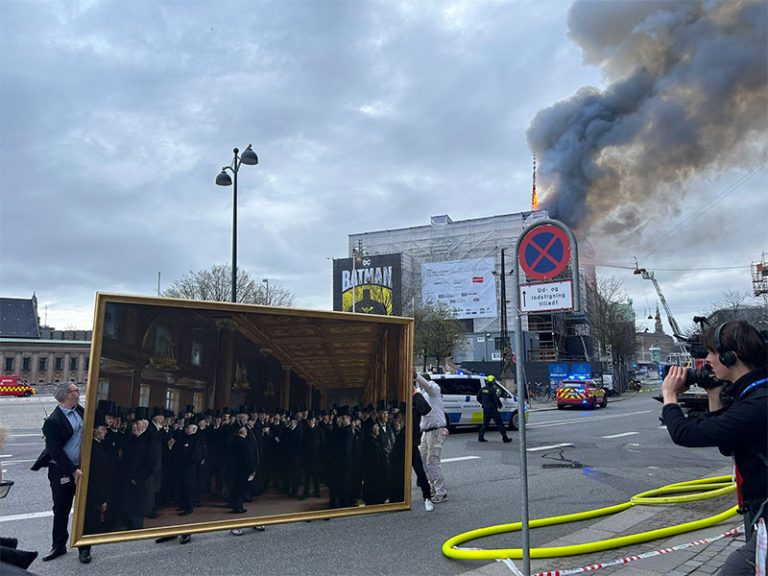Paris. For a non-professional, visiting a construction site is never reassuring about the end date of the work. On this Tuesday, December 5, it is difficult to believe that the building will be handed over to the Organizing Committee for the Olympic and Paralympic Games (Cojop) on April 19 as agreed; initially, locations were expected to be available in February. The Grand Palais must indeed host the fencing and taekwondo events as well as the Cojop security services.
An achievable goal
Didier Fusillier, who took up his position at the head of Réunion des musées-Galeries nationaux du Grand Palais (RMN-GP) only a few weeks ago, wants to be confident. Under the leadership of architect François Chatillon, the teams have been doubled, from 400 to 800 workers, numbers which are expected to increase further in the coming days. Given the delay, it was decided to have all the companies work together, sometimes in a curious sequence: thus workers are still working on the structural work in the nave while the pillars and walls have already been repainted.
But the most decisive is what follows. Only the nave must be made available for the Olympic Games. The National Galleries of the Grand Palais (renamed “Galeries Champs-Élysées”) and their counterpart to the south, as well as the building which provides a link between the two palaces, will not be open until June 2025 while the Palais de la Découverte will not will only reopen in 2026. It is therefore not the entire Grand Palais which must be open for the Olympics but “only” the nave, which changes the equation.
Architect’s view of the Grand Palais restoration project.
© Chatillon Architectes for the Rmn – Grand Palais 2020
And as of December 5, as far as we can judge, the work in the nave is closer to the end than the beginning. The new slab “active, warming-cooling” is finished ; it contains kilometers of heat transfer tubes in which either hot or cold water can circulate, thus diffusing hot or cold air up to human height. How cold? we don’t know, but officially, in winter the temperature can rise to a maximum of 15°C for an outside temperature of 5°C. You will therefore have to keep your coat on.
Much improved logistics, free access, increased tonnage
Logistics, which was one of the weak points of the site, will however be considerably improved with the installation of 8 freight elevators and 11 lifting platforms (plus 29 elevators distributed throughout the site), allowing installations and uninstallations of equipment in the nave much faster. And, thanks to the opening of new emergency exits, the public reception level will increase by 60%.
We will therefore have to wait until 2025 and more certainly 2026 to fully appreciate the changes made to the site. The most spectacular is the creation of a “promenade” at the level of the intermediate building. The public will be able to enter freely through the current entrance into Square Jean-Perrin and cross the building from north to south. This main entrance will serve the galleries surrounding the nave, the new services of the intermediate building, the Palais de la Découverte and the nave (which however retains its majestic entrance on Avenue Winston-Churchill opposite the Petit Palais). The gardens adjoining the building will be redeveloped in order to encourage the public to come there, which is not a luxury, the Grand Palais site being far from being the friendliest place in Paris. The pooling of entries is the most visible sign of the desire to decompartmentalize the different activities of the site, so that the visitor is challenged by a wide choice of activities.
The most thankless part of the work, but also the most problematic, is the upgrading of the electrical cables and pipes. This involves drilling hundreds of walls and floors made of various materials. The paradox is that the Grand Palais was built in barely three years, but it took five (plus the various work campaigns from 2001 to 2008) to restore it.
A popular place
Cultural project. “ President Macron absolutely wants the Grand Palais to become a popular place again,” explains Didier Fusillier. This is a good thing, from the “popular”, the inventor of the Micro-Folies has been doing it for years for the Lille 3 000 event then at the Grande Halle de la Villette, and he is teeming with ideas for the Grand Palais. Thus, the avenue which separates the Grand from the Petit Palais reminds him of the Sambadrome of Rio de Janeiro (Brazil). “We’re going to organize some great parades there!” “, he enthuses. He also wants to increase the number of events (concerts, exhibitions, shows, performances, etc.) under the nave, particularly in the summer when the trade fairs are not rushing to rent the premises. A popular place… but also profitable, which is not the RMN-GP which absolutely must generate a profit of at least 10 million euros for twenty-eight years to repay the loan for the work. The fee that the Center Pompidou will pay in return for the five-year occupation of the (former) National Galleries will not be enough. Its asset? the thousands of additional square meters that the current work will make it possible to open to the public: the balconies, the south-east, north-east and south galleries (curved gallery), the Alexandre-III lounge, not to mention the three auditoriums, the two restaurants and of course the space under the nave which will be possible to partition.







